Building off my initial work to understand the academic citation network for noncommunicable diseases and global health, I started to wonder: how has this academic knowledge network changed structurally over time? Were the papers that were published earliest in the network the ones that remained dominant in terms of citations? What disciplines / areas of scholarship do the dominant papers tend to come from?
So, I decided to run the same analysis I did for the last post for for the cumulative citation network for each year from 1994 through 2016.
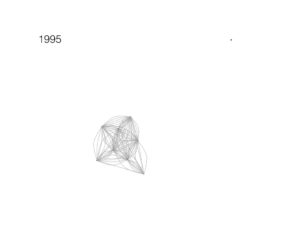



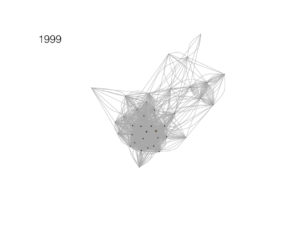
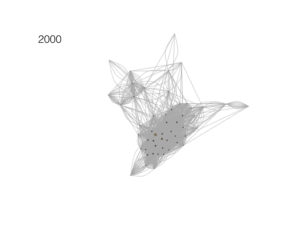


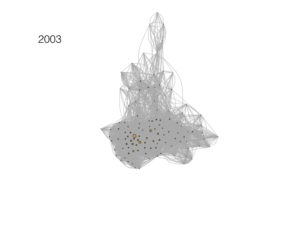
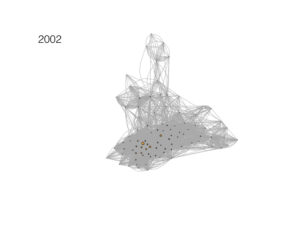

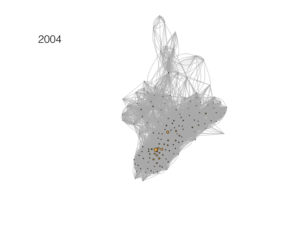

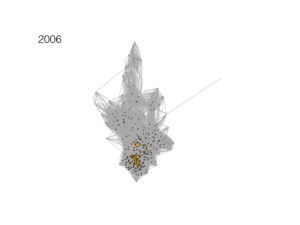
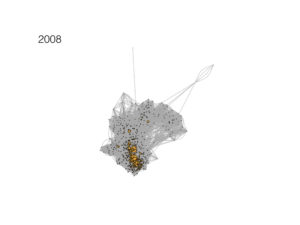
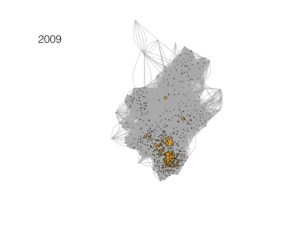
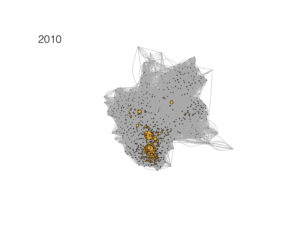
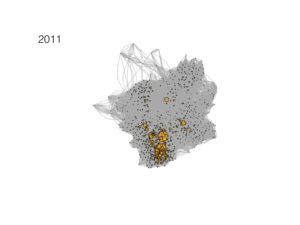

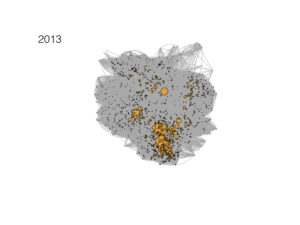
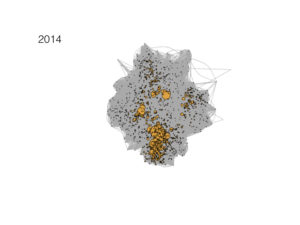
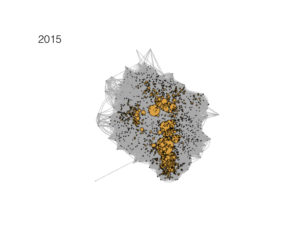
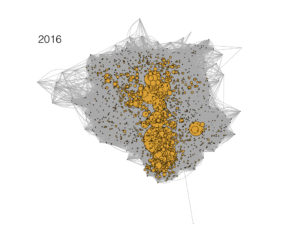
A couple of interesting observations:
- As was clear in my previous post, there seems to be an important inflection point around 1997. The plot of number of average citations over time and the number of articles published each year shows that the number of articles published each year and the average number of citations per article lines cross each other around then. Also in the network plots, we see that the network, for the first time, expands beyond the initial core of about 5 or 6 papers to a new domain of papers previously outside of the network. A question: what are those papers? What causes the change in the average number of citations and causes the rapid increase in the number of papers published annually?
- It appears (though I still need to test this statistically) that the core group of papers that originally made up the center of the network, remain centrally located and develop a primarily core-periphery structure to this citation network. Is this true? Are the papers that are most important early in the network still important later on in the late 2010’s?
- I wonder what the “framing” of these papers are? Do they tend towards the dominant 4×4 framing that the WHO has stuck by, despite the fact that it probably misses much of the NCD experience of most of the very poor people around the world?
There is much more to be done, but it’s cool to see these methods yielding an interesting story, and perhaps explanation to why we see NCDs of the poorest continually marginalized in the global health policy debates.